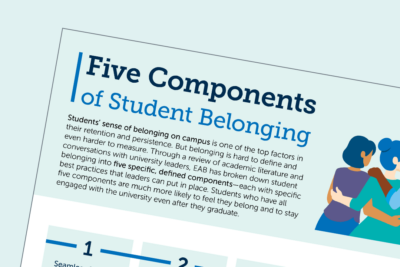Four tactics to support the first-generation student
There is growing public scrutiny of institutions’ ability to effectively serve first-generation college students. Increased scrutiny is largely in response to the alarmingly low completion statistics of first-generation college students. The high attrition levels are especially concerning when we consider that first-generation college students comprise upwards of 24% of students enrolled in four-year institutions. Efforts to address the needs of first-generation college students generally fall at one of two extremes: institution-wide and generalized for all students or narrowly focused and serving only a handful of students. However, neither approach is making a significant impact on first-generation student success. Failure to meet growing needs adequately will exacerbate current retention issues.
As first-generation college students acclimate to their institutions, they face additional barriers related to institutional navigation. These students struggle with unfamiliar jargon and processes, more so than their continuing generation peers. Institutions must help these students learn institutional language and provide assistance in campus navigation. While there are specific and additional benefits to being engaged on campus, it is important to acknowledge the work students are doing off campus as well. Institutions should help them see all involvement, on-campus or in their communities, as a part of their development and higher education experience.
Institutions have made relatively little progress in raising the completion rates of first-generation college students over time. While this is partially due to the increased number of first-generation college students that we are serving, that number won’t change anytime soon. So institutions must rethink how they are supporting these students and how they can continue to do so more effectively in the future.
The four tactics highlighted in this infographic outline proactive, campus-wide approaches—leveraging resources and personnel from across the campus community—to ease transitional barriers for first-generation college students. Implement these strategies on your campus to improve the experiences and outcomes for these students.
More Resources

5 components of student belonging

Increasing Retention Rates for Black and Latino Men

